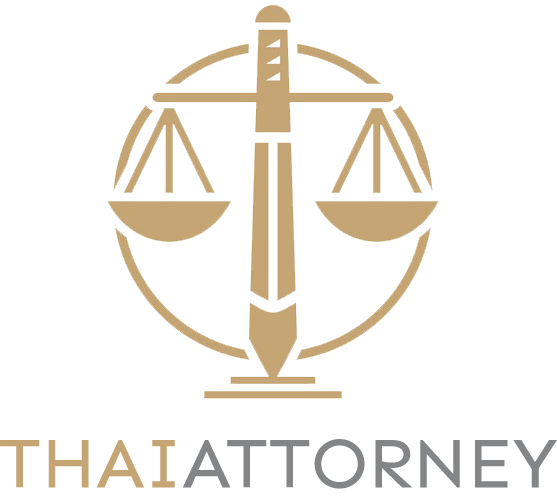Superficies in Thailand. Foreigners face significant restrictions when it comes to land ownership in Thailand. While Thai law generally prohibits foreigners from owning land outright, it does provide mechanisms that allow them to secure long-term rights of use and enjoyment. One of the most important of these mechanisms is the right of superficies.
Superficies allows an individual to own or use buildings, structures, or plantations on land owned by someone else. It is a useful tool in estate planning, property investment, and structuring rights for foreign spouses of Thai nationals.
This article provides an in-depth look at superficies under the Thai Civil and Commercial Code (CCC), its requirements, benefits, limitations, and practical applications.
1. Legal Basis
Superficies is governed by the Civil and Commercial Code, Sections 1410–1416.
-
Section 1410: Grants the right to own buildings, structures, or plantations upon land belonging to another person.
-
Section 1411: The right of superficies can be created for a specified period, for the lifetime of the owner of the land, or for the lifetime of the superficiary (the person granted the right).
-
Section 1412: A superficies agreement must be registered with the Land Office to be enforceable.
-
Section 1416: Upon expiration of the superficies, ownership of the buildings or structures reverts to the landowner unless otherwise agreed.
2. Nature of the Right
Superficies is a real right (a right in rem), not merely a contractual arrangement. This means:
-
It binds not only the landowner but also third parties (including heirs and subsequent purchasers of the land).
-
The superficiary (holder of the superficies) owns the buildings, structures, or plantations separately from the land.
-
It provides long-term security compared to unregistered leases or contractual agreements.
3. Duration of Superficies
The right of superficies may be established:
-
For a fixed term: Maximum of 30 years.
-
For the lifetime of the landowner.
-
For the lifetime of the superficiary.
👉 Practical note: A lifetime superficies can sometimes provide stronger security than a 30-year lease, especially in family arrangements between a Thai spouse and a foreign spouse.
4. Creation of Superficies
The process typically involves:
-
Agreement: Landowner and superficiary agree on terms (duration, rights, compensation if any).
-
Registration: The agreement must be registered at the Land Office where the land is located.
-
Land Title Check: Ensure the land has a valid title deed (Chanote or equivalent).
-
Documentation: Required documents include ID cards, passports, corporate documents (if applicable), and the land title deed.
-
Registration Fee: Typically 1% of the value declared in the agreement (with caps imposed by Land Office rules).
Without registration, a superficies is not legally effective against third parties.
5. Rights of the Superficiary
-
Ownership of structures: The superficiary owns buildings, constructions, or plantations on the land.
-
Use of land: Limited to the extent necessary for the enjoyment of the superficies.
-
Transferability: The right of superficies can be transferred, mortgaged, or inherited (if created for a fixed period).
-
Protection from eviction: The landowner cannot remove the superficiary during the term of the right.
6. Duties of the Superficiary
-
Respect for landowner’s rights: Must use the land consistent with the agreement.
-
Return of rights: Upon expiration, ownership of buildings may revert to the landowner unless the parties agree otherwise.
-
Maintenance obligations: Typically borne by the superficiary.
7. Termination of Superficies
Superficies may end by:
-
Expiration of the agreed period.
-
Death of the landowner or superficiary (if created as lifetime right).
-
Mutual agreement between parties.
-
Renunciation by the superficiary.
-
Court decision (e.g., for breach of contract).
Upon termination, unless otherwise agreed, buildings or structures on the land become the property of the landowner.
8. Advantages of Superficies
-
Legal certainty: Registered at the Land Office, enforceable against third parties.
-
Security for foreigners: Allows foreigners to legally own houses or buildings on land even though land ownership is restricted.
-
Inheritance planning: Can be structured for lifetime rights, securing family members.
-
Flexibility: Transferable, mortgageable, and usable as collateral in some cases.
9. Limitations and Risks
-
Land ownership restrictions remain: Foreigners still cannot own the land itself.
-
Duration limits: Maximum of 30 years if not granted for life.
-
Termination consequences: Buildings may revert to the landowner unless agreed otherwise.
-
Land Office practice: Some officers may impose stricter interpretations of duration or documentation.
-
Dependence on land title: Superficies cannot be created if the land has no proper title deed.
10. Practical Applications
A. Foreign Spouse Owning a House
A foreign husband married to a Thai wife may register a superficies over the wife’s land. This allows him to own the house built on the land, even though he cannot own the land itself.
B. Commercial Use
Foreign companies may use superficies to secure rights to construct factories or warehouses on land owned by a Thai partner.
C. Estate Planning
A Thai father may grant a superficies to his child, ensuring ownership of a house independently of land inheritance arrangements.
11. Comparison with Leasehold
| Feature | Superficies | Lease |
|---|---|---|
| Nature | Real right (in rem) | Contractual right (in personam) |
| Duration | 30 years or lifetime | Max 30 years |
| Ownership of buildings | Superficiary owns structures | Landowner usually owns structures |
| Transferability | Transferable, inheritable | Transfer requires consent of lessor |
| Termination | May revert buildings to landowner | Buildings often belong to landowner automatically |
👉 Conclusion: Superficies offers stronger ownership rights over buildings compared to a lease, though both can be used together for additional protection.
12. Steps for Foreigners Considering Superficies
✔ Confirm the land has a proper title deed (Chanote preferred).
✔ Negotiate terms with the landowner (duration, compensation, treatment of buildings after expiration).
✔ Draft a written agreement (preferably with legal counsel).
✔ Register the superficies at the Land Office.
✔ Keep certified copies of registration documents.
✔ Consider combining superficies with a lease for additional protection.
Conclusion
The right of superficies in Thailand is a valuable legal tool for those who cannot own land but wish to secure ownership of buildings or structures. Governed by Sections 1410–1416 of the Civil and Commercial Code, it provides long-term stability, protection against third parties, and flexibility in structuring property rights.
Foreigners, mixed-nationality couples, and businesses can use superficies as part of broader property and estate planning strategies. However, careful drafting, proper registration, and professional legal advice are essential to avoid pitfalls and ensure that rights are fully protected.
Disclaimer: This article provides general information on superficies in Thailand under the Civil and Commercial Code. It does not constitute legal advice. For case-specific guidance, consult a licensed Thai property lawyer.

